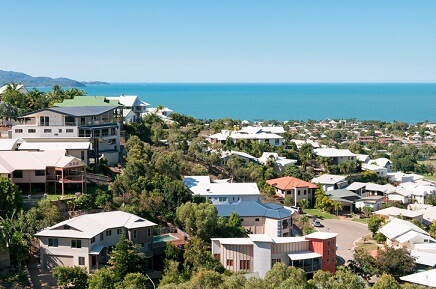When considering depreciation, which will gain the greatest benefit from capital allowances: new or old properties? That is the ongoing question – one that Paul Mazoletti from Napier & Blakeley aims to answer once and for all

When considering depreciation, which will gain the greatest benefit from capital allowances: new or old properties? That is the ongoing question – one that Paul Mazoletti from Napier & Blakeley aims to answer once and for all
Depreciation (capital allowances) can be a valuable tax deduction for any property investor and a great way to reduce your taxable income. However, the question of old versus new does come up a lot in discussions with investors.
So, who is right and who is wrong? With effect from 9 May 2017, if you are focusing on capital allowances deductions, new property is the better way to go.
We could also suggest that neither is the ‘best’ way, as there are advantages to both. However, if legislation is passed soon, the proposed changes will certainly lean you towards buying new.
The benefit of newer properties
The main benefit of buying a new investment property is that this will provide a higher total base tax deduction entitlement, when considering the combined value of fixtures and fittings the building structure’s value.
Deductions through the depreciation of fixtures and fittings under Division 40 may now only be available on any new investment property asset acquisition made after 9 May 2017. Deductions through the depreciation of the building structure under Division 43 are also available on both new and older assets; we’ll explore this further later in the article.
The ATO introduced capital allowances in 1985 for the residential sector, coincidentally at the same time as Napier & Blakeley opened its first office in Australia and launched its capital allowances business.
Since then, a few of the fundamentals of capital allowances have changed in regard to what you can claim on a property. What remains the same is the question of what provides the biggest deductions, and which properties provide the most value, particularly with regard to new and old properties.
Every situation is different, and certainly newer properties are now looking very attractive, as outlined below.
Deductions under ‘Capital Allowances’ are categorised into two main divisions:
- Division 43 Capital Works (Building)
- Division 40 Capital Allowances (Depreciating Assets – Plant)
Division 43 Capital Works (Building) – Old vs new
Division 43 relates to the calculation of the construction expenditure on both building and structural improvements. To calculate the construction expenditure for building allowance deductions as defined in Section 43-70 ITAA 1997, you require a suitably qualified person (a quantity surveyor) who can certify the cost of constructing a building, in addition to structural improvements such as driveways, fences, etc., as at the date they was installed and completed.
This cost is then apportioned over the tax life of the building (usually 40 years or 2.5% per annum) and can be claimed as a tax deduction.
Second-hand residential deductions commence from when an investment asset was completed.
For example, if in 2017 you purchased a 10-year-old house built in 2007, you need to determine the construction cost as at 2007 and start claiming an allowance per annum for the remaining 30 years, as 10 years have already passed. This is all you can claim now, in accordance with the proposed new legislation.
If you recently purchased a new house, you have the next 40 years to claim this allowance per annum.
The construction expenditure and size of the house will determine what you can claim in the year you buy or build, and how far into the future you can claim deductions is dependent on the age of the building. This also applies to low-rise townhouses and high-rise apartments.
Another consideration is that if the property is within a body corporate you will also be able to claim an additional portion of the building’s common property. This allowance depreciates the same
Depreciation of fixtures and fittings under Division 40 is always available on any new investment property (to be confirmed by legislation shortly)
• You can generally claim 10–20% of a new property’s construction cost under Division 40
• For instance, a new property costing $400,000 to construct could generate $40k–$80k in capital allowance deductions over 10 years
• High-rise new apartments may attract more Division 40 deductions due to more communal amenities (eg lifts, pools)
OUR EXPERT
Paul Mazoletti is a director at Napier & Blakeley, the first provider of depreciation schedules in the Australian market (since 1985).
This article first appeared in MPA's sister publication Your Investment Property



